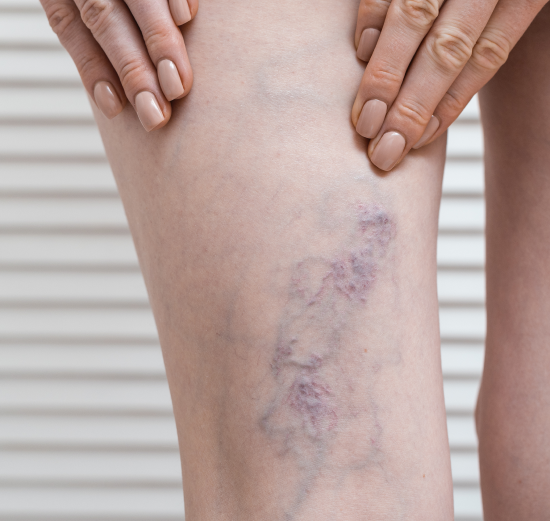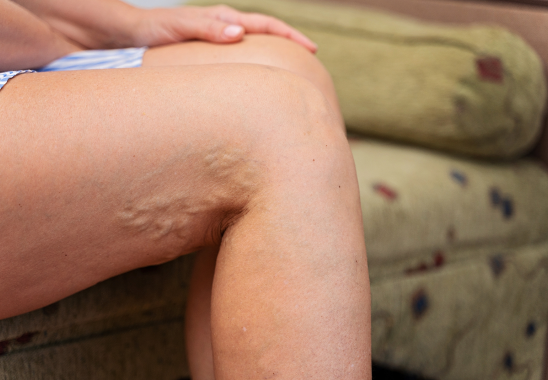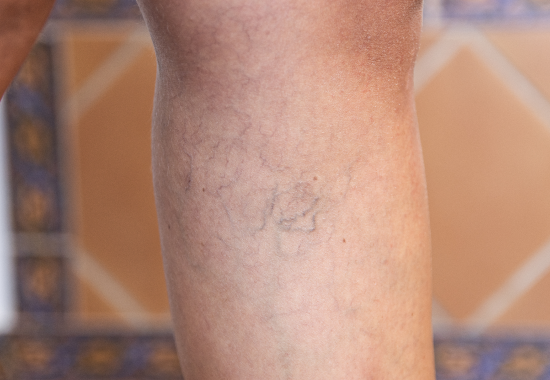Symptoms of Chronic Venous Insufficiency (CVI)
We provide clinical and cosmetic vein treatments for healthy, more beautiful legs!
1. Chronic venous insufficiency
Normal Veins are thin walled vessels with one way valves that direct blood back to the heart. If veins become enlarged or the valves are damaged, blood can pool in the leg veins, increasing their size and distorting valves even more. This is called chronic venous insufficiency (CVI) and is the cause of varicose and spider veins (telangiectasia). Who gets CVI? Nearly 40% of women and 25% of men have venous insufficiency. Genetics plays a role in the development of CVI – if your mother or other family member has varicose veins, you have a greater chance of developing them as well. Other factors that contribute to CVI are pregnancy, occupations requiring standing for prolonged periods of time, obesity, and aging. Hormonal factors cause women to be more frequently affected than men. Not all patients with CVI have visible varicose veins. Symptoms of CVI include swollen ankles, especially at the end of the day, tired or restless legs, itching or burning of the ankles and the appearance of spider veins around the ankles.



2. Varicose veins
Varicose veins are enlarged “ropey” looking veins most commonly seen on the legs. Failure of the valves in the veins causes blood to pool, increasing the pressure in the leg veins, weakening their walls, and producing the bulging seen under the skin.
3. Spider veins
Telangectasias, more commonly known as spider veins, are smaller than varicose veins and are found at the surface of the skin.
They can be created by the same process as varicose veins, or may rarely simply be a cosmetic problem.


